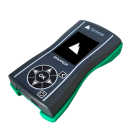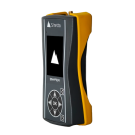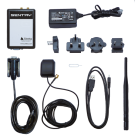4G refers to the fourth generation of cellular communication technology which supersedes the global system for mobile communications standard (GSM) and high speed packet access (HSPA) standards. It offers massive improvements in data throughput and reduced latency over 2G and 3G networks as it is entirely IP based. As 4G is IP based it no longer supports circuit switched network nodes and therefore the base stations only need to support IP traffic which means that all 4G voice traffic is sent over the IP infrastructure.
As with 3G all of the benefits of the 2G and 3G system have been incorporated in to the 4G network to offer enhanced services with support for legacy applications such as SMS.
The 4G spectrum operates in a similar way to 2G and 3G with different regional areas being supported by different bands, however, the number of bands and regions compared to 2G and 3G is vastly different.
There are 44 defined bands for 4G and of these 13 bands are defined as Time Division Duplex (TDD) and 31 are defined as Frequency Division Duplex (FDD). The differences between these two standards is based around how they transmit and receive data using the shared spectrum.
TDD uses one frequency carrier to transmit and receive data over but the time for transmitting and receiving is different. With FDD two different frequencies are used to transmit and receive data but the data can be sent at the same time.
4G has a higher cost position compared to 2G and 3G but this cost is coming down as 4G / LTE technology is becoming more widely used across the world. The 4G network is split in to a number of classifications which define the mode of operation (TDD or FDD), the frequency band, the speed of operation and the number of MIMO layers. This can be seen in the table opposite.
As the IoT market does not necessarily require high data rates, the enhancements that are brought with the 4G network are normally not needed and as a result 2G has remained the favoured solution for IoT equipment developers. As with 3G a signifiant improvement offered by the 4G network over the 2G network is the network connection latency between two endpoints. This improvement means that the first byte will be received at the destination much more quickly and this means that the entire system latency will reduce. This opens the door for more real time, safety critical applications and allows for a much faster response times when sending and receiving information across the network.
Unlike 2G and 3G networks, the 4G network is being invested in heavily to provide more global coverage as well as further development of the new 3GPP version releases. In addition to this investment is being provided for category M and category NB IoT which offer lower speed connections designed for direct 2G network replacement.







